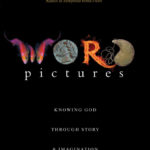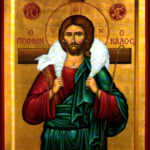Iconoclasm, Part 2
In a sense, Protestant iconoclasm gave sacred significance to “secular” subjects and experience. It made the whole of life religious, not merely church life. Conversely, it also “secularized” art, that is, it brought art out of the parameters of religious cult objects and transferred it into the domain of aesthetic beauty apart from ecclesiastical use. It was the theological foundation of the liberation of the arts.
Yet, in spite of this artistic liberation, there is nevertheless a lack of visual and dramatic tradition in Protestantism.1 To be sure, not all the arts had been so effected, music being a prime example, and the Dutch Golden Age of painters including such giants as Rembrandt and Dürer are examples of Reformed influence on the arts.2 But these examples are extremely limited because the suspicion of images soon broke out of its ecclesiastical focus and bled into the prevailing Protestant secular culture to include many forms of imagination and creativity. As Dyrness notes, “all attempts at using imagery, drama, even cultural festivities, in the service of the communication of Christian truth appeared to be given up by around 1580.”3 It was a pendulum swing, from one extreme to another, that would ultimately leave lasting negative impact on Protestant involvement in the arts for years to come.4
 As already mentioned, the Reformers did not discourage artistic invention, but they also did not spend much time or effort in encouraging it either. Of the millions of pages written by such titans of the word as Calvin, Zwingli, Knox, Bucer and others, there was a significant amount written about the wrong use of images, but comparatively little on the right use of the arts. Such references are relegated to occasional and scattered sidebars or tangents as they relate to a particular Scripture. But almost nothing of significant theological development.5 The net effect of this virtual ignoring of the theological value of art is the implicit devaluing of it. To say, as Calvin did, that “All the arts come from God and are to be respected as divine inventions,”6 is laudable, but to do so without substantial explication of their importance, as he did with so many other doctrines, is to give with one hand and to take away with another.7 As the saying goes, actions speak louder than words, and a systematic theology without a developed aesthetic is an implicit sign of an underlying belief that beauty is not an essential part of theology.
As already mentioned, the Reformers did not discourage artistic invention, but they also did not spend much time or effort in encouraging it either. Of the millions of pages written by such titans of the word as Calvin, Zwingli, Knox, Bucer and others, there was a significant amount written about the wrong use of images, but comparatively little on the right use of the arts. Such references are relegated to occasional and scattered sidebars or tangents as they relate to a particular Scripture. But almost nothing of significant theological development.5 The net effect of this virtual ignoring of the theological value of art is the implicit devaluing of it. To say, as Calvin did, that “All the arts come from God and are to be respected as divine inventions,”6 is laudable, but to do so without substantial explication of their importance, as he did with so many other doctrines, is to give with one hand and to take away with another.7 As the saying goes, actions speak louder than words, and a systematic theology without a developed aesthetic is an implicit sign of an underlying belief that beauty is not an essential part of theology.
Perhaps one of the reasons why Calvin accorded “respect” for the arts, but not exaltation was because he viewed much art as some uninformed Christians still do, either as didactic propaganda or as entertainment for pleasure, rather than a necessary part of our human existence. In one of the only places where he writes more than a passing comment about art, Calvin refers to musical instruments, and by extension the other arts as well, as being able to “minister to our pleasure, rather than to our necessity, still it is not to be thought altogether superfluous; much less does it deserve, in itself, to be condemned.” Though he does not condemn art, the essence of art is pleasure and this pleasure is not necessary to our existence. But hey, it’s not altogether superfluous – only partially superfluous by implication. Calvin’s prejudice was clearly didacticism, an elevation of utility and doctrinal teaching as the supreme form of communication. Thus, his tendency was to favor representational art of historical events used to “admonish” or “teach” over other imagery that was more decorative or abstract because they had “no value for teaching.”8
Another way in which Calvin and others like Karlstadt and Bucer unwittingly devalued art was in their appeal to divert the money for church decoration to the poor.9 While this is also a laudable attempt to take the commands of God to love the poor seriously, it ends up in another unbiblical either/or dichotomy between art and human need. Excess can be waste, but splendor and beauty are not intrinsically excess. God gave commands to love the poor (Deut. 15) and collected massive amounts of money to build the rather splendorous spectacular tabernacle, a model reflected in Cathedrals and their ornamentation (Ex. 36). Both beauty and charity are important to God and both are necessary.
There is an analogy between Matthew 26 and this view of beauty as wasteful compared to giving to the poor. When a woman pours expensive perfume on Jesus’ feet, the disciples complain with a similar refrain to that of Luther and Calvin. “Why this waste? For this perfume might have been sold for a high price and the money given to the poor” (v. 8-9). Jesus puts them in their place by saying that she has done a good thing, not a wasteful thing, in symbolic preparation for his burial. Perfume was used to mask the smell of death with an attractive aroma, a symbol of eternal life (Luke 23:56). Beauty is not waste. Christians, in their zeal for theology, often neglect the necessity for aesthetic beauty in their worldview.10
It could be said that the various Reformed strains of art that did survive the iconoclasm controversy did so in spite of the dominant voices of iconoclasts. Calvinists like Rembrandt would paint pictures of Christ despite the accusation by many that this was a violation of the Second Commandment. Calvinist Print Publisher, Claes Jansz Visscher, published Bibles heavily illustrated with engravings in an attempt to help people understand the stories better, as well as political prints against the iconoclasts.11 The famous engraver, Albrecht Dürer, a Lutheran, was praised by many Calvinists, yet, his view was in some ways unlike Calvin’s. Where Calvin considered the ear to be superior to the eye as a means of receiving God’s word,12 Dürer was more balanced in his Lutheran view that both are necessary to our reality and relationship with God. Dürer wrote:
The art of painting is made for the eyes, for sight is the noblest sense… A thing you behold is easier of belief than [one] that you hear; but whatever is both heard and seen we grasp more firmly and lay hold on more securely. I will therefore continue the word with the work and thus I may be the better understood.13
Dürer had it right. Both word and image were necessary. Perhaps what Calvin missed in his reactionary logocentrism was that the ear was just as much a sense organ as the eye.14 Hearing the word was just as much a sensate experience as seeing it. The ear is no more transcendent than the eye. Both ear and eye are a God-ordained sensate part of how we interact with Him. After all, one must use their eyes to read the Bible just as surely as they use them to read a painting. A preacher preaching his sermon of God’s Word with all its visual communication through body language, expression, verbal tone and other homiletical rhetoric, is simply a one-man play or dramatic performance, in so many words, a work of art.15
This false separation of the senses leads to a matter/spirit dualism in some Reformed theology that reflects the very secular/sacred dichotomy that Reformers debunked. In his application of the Second Commandment against veneration of images, Calvin, says, “‘God should be adored in spirit’ and not through material things.”16 For Calvin and others, spirituality was defined in internal invisible terms (transcendence) and worldliness or immaturity was defined in external visual terms (immanence). Thus transcendence and immanence were at odds with one another just as the eye and ear were. And most of the Reformers went with transcendence.
The Bible affirms both the transcendence and immanence of God as equally ultimate, many times in the very same passage. For instance, Paul, when preaching to the pagans on Mars Hill says, at the same time, “God does not dwell in temples made with hands” (transcendence) and “in Him we live and move and exist” (immanence) (Acts 17:24, 28). In the Old Testament Jeremiah 23:23 asks rhetorically, “Am I a God who is near” (immanence), declares the LORD, and not a God far off?” (transcendence). Col. 1:16-17 says that all things were created “by him, through him, for him” (transcendence) – “and in him all things hold together” (immanence). So a theology, including an aesthetic, should maintain an equal ultimacy between transcendence and immanence or it is not true to the Scriptures, even if it is true to the Institutes of the Christian Faith.
- Michalski, The Reformation and the Visual Arts, p. 40. ↩
- The Hudson River School of painters in the 19th Century is another movement that was influenced by some Reformed thinking. See Gene Edward Veith’s Painters of Faith for an excellent exploration of that rich tradition and its profound impact on landscape painting. ↩
- Dyrness, Reformed Theology, p. 124. Also, Philip Benedict, “Calvinism as a Culture?” in Paul Corby Finney, Seeing Beyond the Word, p. 31. ↩
- Paul Corby Finney, Seeing Beyond the Word, p. 8. ↩
- Ibid, 79. ↩
- John Calvin, Harmony of the Law, Exodus 31. (Albany, OR: Ages Software, Version 1.0, 1998). ↩
- M.Ramsay, Calvin and Art: Considered in Relation to Scotland (Edinburgh, England, The Moray Press, 1938), p. 13. ↩
- John Calvin, Institutes of the Christian Religion 1:11:12 (AGES Software • Albany, OR USA Version 1.0 © 1998). ↩
- Michalski, The Reformation and the Visual Arts, p. 69; and Philip Benedict, “Calvinism as a Culture?” in Paul Corby Finney, Seeing Beyond the Word, p. 28. ↩
- See Calvin Seerveld, Bearing Fresh Olive Leaves: Alternative Steps in Understanding Art (United Kingdom, Piquant Press 2000), pp. 1-5. ↩
- Ilja M. Veldman, “Protestantism and the Arts: Sixteenth- and Seventeenth-Century Netherlands,” in Paul Corby Finney, Seeing Beyond the Word, p. 417. ↩
- Michalski, The Reformation and the Visual Arts, p. 65. ↩
- As quoted in Margaret R. Miles, Image as Insight, p. 116. ↩
- Dyrness, Reformed Theology, p. 69. ↩
- Ibid,, p. 121. ↩
- Michalski, The Reformation and the Visual Arts, p. 65. ↩











































I just finished reviewing a book called “Outreach and the Artist” last night. It seemed to fall on a more utilitarian view of the arts, though there was an emphasis on quality artwork.
>> Thus transcendence and immanence were at odds with one another just as the eye and ear were.<<
Isn't that kind of like the Gnostic belief that the material world is evil and the spiritual is much preferred?
I’ve just skim-read the article, so forgive me if I’ve missed something!
A big difference, though, is that in the Old Testament God’s temple was a physical building. In the New Testament God’s temple is people.
Personally, therefore, I would prefer if there were no ‘church buildings’ at all – although I do worship in one…
And to add to the subject here’s an article by my brother. Not saying I would come to the same conclusions as him!
http://home.clara.net/fortiter/neils_musings/dissert3.html
Thanks for the insights!
Love this, Brian!
There is a certain amount of frustration I have with this discussion, simply because of all the labels necessary to discuss things. “Reformed” and “Calvinist” and “Protestant” and … blah blah blah. Mine is a simple faith, and I prefer simple terms and to distill things to their bottom lines.
Nonetheless, it is mighty helpful for the Body at large when someone familiar with all this (or willing to research it long and hard enough to become familiar with it) takes the time to share their insights. It does help to know our history, to understand where ideas began, to trace the roots of things commonly held as fact or “doctrine” and propose that they could be different.
It even sounds like you’re saying many today could embrace a different view of the arts without violating the roots of their faith, without being at odds with the writings and beliefs of their denomination’s founders.
If those original founders actually said positive things about art and its place in the human experience, and it simply got lost because of lack of emphasis in comparison with other doctrinal priorities, I like to think people will be more willing to embrace it without feeling like heretics.
Of course, some of us have no trouble with labels like “heretic”, “maverick”, or even (ha!) iconoclast.
Teddi,
Good points. I guess we always have the downside of labels to deal with. They seem to spark such emotional reactions at times.
As a matter of fact, the Reformation is my heritage, but I am not so devoted as to be unwilling to face my own heritages blind spots and call them out. We should all be willing to admit where our own position is weak or where our tradition has its faults or we are not honest people.
That’s also why the first post part one was about what was right about the Reformation. Always say what’s good before you critique.
Although I’m guilty of not always doing that either! 🙂
So we had approximately 1500 years of transcendent thinking and 500 years of iconoclasts. Only 1000 more years to go to break even!
I have been a black and white, all or nothing kind of person up to this point in my life. God has whispered that He has more for me and that anyone who tries to live at the extreme end of any dichotomy, sacred/secular, transcendent/immanent etc is going to miss out on knowing Him. Ouch.
I have been exploring the duality, triality, quadrality of humanity in my writing; our ability to feel joy and sorrow, hatred and passionate love etc. at the same time. Thank you for opening this world of theology to me. It helps me to live on both sides of the veil.
You’re welcome, Henrietta. It is such an encouraging inspiration to me to see both Immanence and Transcendence as equally ultimate in many places of Scripture. Its what gave me the courage to take that step out of the shackles of Evangelical modernism.
Brian, I wish I understood what you just said. ‘Cause it sounds like a totally epic journey.
Can you boil it down for us lay folks?
What does that mean in practical terms? What were the shackles? What is “evangelical modernism” and why is it bad (or why was it bad for you)? How does having both Immanence and Transcendence in your life make a difference day to day?
Please forgive my ignorance. What you’re saying makes me hungry to understand.
To be honest, Teddi, it took the book Word Pictures to explain what you just asked, but thanks for the appreciation and respect. In short, I would say that the shackles were upon my imagination. I remember Schaeffer said that it is the Christian imagination that should fly to the stars. And I finally felt that when I took the dangerous step of writing my Chronicles of the Nephilim series which was the fearless integration of imagination with theology.
Evangelical modernism has many faces: One is that it is an elevation of reason or rationality and propositional truth over image, poetry and myth. I’m still a lover of reason and philosophy, but I prefer and get more from a movie than a sermon. Not dissing sermons, just saying that it’s more Biblical to stress story. Parables are not carriers of doctrine, they are necessary to the reception of the truth that cannot always be explicated. Stories and image and poetry are no longer means to an end of doctrine, but the actual way to understand the heart and mind of God.
The stress on transcendence of God creates a sense of “otherness” which separates us and makes us colder, less compassionate, and mental. Reducing relationship to a worldview and therefore we become less personal and gracious. We see people in terms of what they believe rather than who they are in the image of God. But when we embrace the immanence of God’s word, the ambiguity, the emotion, the story and imagination, we become more in tune with God’s creation and with God simultaneously. We understand the paradox of grace, not as a mere doctrine, but as an embedded reality. I become more patient with people, I don’t feel I have to correct every wrong idea, I stress the person over their beliefs. I am more at Shalom and less of an adversary of hostility. Why? Because God is NOT about scientific, historic or even doctrinal precision as modernity defines it. If he was, he wouldn’t have made so many important doctrines so ambiguous and imprecise. Let’s be honest, there is truth, but it is not as “clear and distinct of ideas” as we would like it to be. Mystery is not something to be afraid of but something to embrace, because God leaves so many things mysterious. AND THAT IS OKAY, because God does it.
I’m probably too abstract because that is my background, my strength, and my weakness. But I guess you would have to ask my wife to explain it in more day to day affect on who I am. She’s better at that. Sorry.
Here is the first chapter of Word Pictures, where I do give a bit of my testimony of the real effect in my life of modernism and my turn:
http://godawa.com/Writing/Articles/WordPictures-FirstChapter.pdf
Ha, yeah, I hear ya (about it taking the whole book to really answer). Given the depths of your exposition in these articles, I admit I was concerned that your book would be a bit over my head.
Thanks for the link, I’ll read through the first chapter. And what you said in your comment did help me “get” what you’re saying. And continued to intrigue me.
Thanks so much for sharing your experience and your time here!
I read your first chapter, thank you for providing it! Fascinating and provoking. As an African raised with a Chilean Anglican minister in Canada I think this modernist dichotomy has a European/North American flavour. Have you spoken to people from Africa or South America? Asia or Australia?
Thanks, Henrietta! I have not spoken to those outside of America about this. Alas, I am inextricably linked to my heritage. But I certainly understand it is a distinctly Western bias, infected as it is by the Enlightenment.